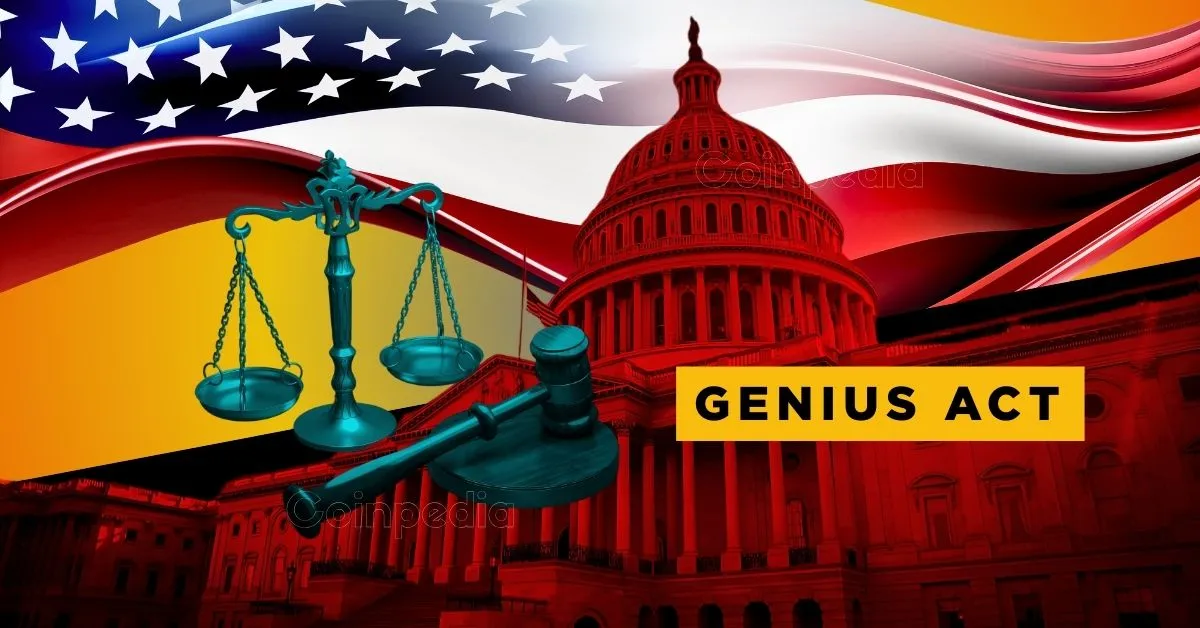The GENIUS Act: Reshaping Digital Finance in the US
The U.S. Senate’s approval of the GENIUS Act isn’t just another headline; it’s a game-changer. The cryptocurrency world, long operating in a gray zone, is about to get a major dose of regulation. This isn’t about stifling innovation; it’s about building a secure and transparent future for digital assets, starting with stablecoins. This bipartisan move shows that Congress is acknowledging that digital finance isn’t a fad – it’s a force that needs thoughtful governance.
Decoding the GENIUS Act: Stablecoins in the Spotlight
Officially known as the “Guiding and Establishing National Innovation for U.S. Stablecoins” Act (S.1582), this bill zeroes in on payment stablecoins. Think of these as the dollar bills of the crypto world. They’re designed to hold a steady value, usually pegged to a traditional currency like the U.S. dollar. This stability makes them useful for everyday transactions within the crypto ecosystem, offering the speed and efficiency of digital assets without the rollercoaster ride of Bitcoin’s price swings.
With the stablecoin market booming to a whopping $250 billion, its influence is spreading beyond crypto circles and into mainstream finance. But this rapid growth has sparked concerns: How do we protect investors? How do we prevent systemic risk? How do we combat illicit financial activities? The GENIUS Act steps in to answer these questions with a clear set of federal rules.
Unpacking the Key Provisions: Safety and Transparency First
The GENIUS Act lays out several crucial guidelines, with safety and transparency taking center stage. First, it demands that stablecoin issuers back their digital assets with “safe, liquid assets,” primarily U.S. Treasury securities. This ensures that stablecoins can be reliably redeemed for their stated value, preventing a “run” on stablecoins, similar to the bank runs of the past. The Act also makes the redeemability of stablecoins crystal clear, providing a straightforward process for users to convert their digital assets back into U.S. dollars.
Beyond asset backing, the Act establishes a regulatory framework for private stablecoin issuers, bringing them under federal oversight. This means greater transparency and accountability within the industry, something that’s been sorely needed. Furthermore, the legislation aims to encourage innovation by creating a regulated pathway for private companies to issue stablecoins, potentially fueling further development and adoption of this technology.
Crossing the Aisle: Bipartisan Support in a Divided Congress
The GENIUS Act didn’t just squeak through the Senate; it passed with a resounding 68-30 vote. This is particularly impressive because it shows a powerful bipartisan consensus in a deeply divided political landscape. Eighteen Democrats joined the majority of Republicans in supporting the bill, a testament to its broad appeal. Senator Bill Hagerty (R-Tenn.), a central figure in pushing the bill forward, emphasized its cross-party appeal.
This widespread support suggests a shared belief that regulating stablecoins isn’t a matter of pro- or anti-crypto sentiment. Instead, it’s about safeguarding consumers, ensuring financial stability, and keeping the U.S. competitive in the rapidly evolving world of digital assets. Of course, there were dissenting voices, like Senators Rand Paul and Josh Hawley, who voiced concerns about potential government overreach and its impact on individual privacy.
Industry’s Take: A Step Towards Legitimacy
The cryptocurrency industry has largely welcomed the GENIUS Act with open arms. For years, the sector has been lobbying for clear rules of the road, arguing that regulations would provide much-needed certainty, attract more investment, and drive mainstream adoption. The Act’s passage is viewed as a critical step towards making stablecoins legitimate and integrating them into the established financial system.
But the GENIUS Act impact isn’t confined to the crypto world. This legislation could have a ripple effect on other areas of finance, potentially influencing the development of central bank digital currencies (CBDCs) and accelerating the adoption of blockchain technology across industries. The requirement for stablecoin reserves to be held in safe, liquid assets like Treasuries could also boost the U.S. debt market, increasing demand for these securities.
Navigating the Road Ahead: Challenges and Considerations
Despite the widespread enthusiasm, the GENIUS Act isn’t without its critics. Some argue that the bill doesn’t go far enough to address potential risks, particularly concerning the potential for corruption within the crypto sector. There have been concerns raised regarding the influence of individuals with close ties to former President Trump and the potential for conflicts of interest.
Looking forward, the true test of the GENIUS Act will lie in its implementation. The specific regulations developed by the various agencies will determine how effective the bill ultimately is. It’s important to remember that the Act only focuses on stablecoins. Broader regulation of the cryptocurrency market, including exchanges and other digital assets, remains a significant challenge for lawmakers. The ever-changing nature of the crypto landscape will require ongoing legislative and regulatory adjustments to ensure the U.S. strikes the right balance between fostering innovation and mitigating risk.
A Digital Finance Turning Point
The passage of the GENIUS Act is more than just a new law; it’s a turning point for digital finance. It marks a transition from regulatory ambiguity to increasing clarity and oversight. While challenges remain, the Act lays the foundation for the responsible development and integration of stablecoins into the U.S. financial system. This landmark legislation isn’t just about regulating cryptocurrency; it’s about shaping the future of finance in the digital age and solidifying the United States’ position as a leader in this transformative space.











